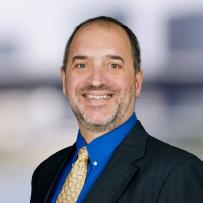The Potential for Hybrid Digital Twins
By Bruce Johnson, Senior Technology Fellow

Decision-makers in the water and wastewater process industry are embracing digital transformation to generate the most value from their data, augment limited labor resources, increase their asset reliability and optimize their operations. A vital step in this digital transformation and the move away from reactive planned maintenance is the adoption of live digital twins. Jacobs follows the lead of the International Water Association in defining a digital twin as a simulation/model of an existing system that automatically receives live data into that simulation. This provides a true mirror of the actual facility and should not be confused with a simple off-line simulation.
At WEFTEC 2024 this year in New Orleans, I’ll be presenting on our recent digital twin work with The Water Research Foundation (WRF Project 5121 Development of Hybrid Digital Twins for Predictive Nutrient Control). This WRF project developed, implemented and studied how full-scale live digital twins of nutrient removal water resource recovery facilities, which included machine learning, could be used to benefit ongoing operations. In the three full scale pilots completed, digital twins were not only able to benefit the targeted goals of these facilities, but provided significant ancillary benefits that address many of the additional challenges that operators, engineers and managers face as they balance regulatory, environmental, financial and labor force concerns. One of our most interesting findings is that it may be possible to reduce the level of physical instrumentation needed with digital twins, thus reversing the industry trend of needing more and more instrumentation to achieve optimization goals.
Jacobs is building on this learning by commercially offering this service under our Intelligent O&M product line as the Hybrid Optimizer. The Hybrid Optimizer is a unique live wastewater process digital twin, integrated with Jacobs’ process expertise, that’s designed to extract the most value out of existing data by providing actionable and time-relevant insights into plant operations. It accomplishes this by integrating soft sensors, process intelligence and machine learning based forecasting throughout the plant. Its primary focus is to augment existing staff efforts by providing process insight and operational recommendations to improve process reliability and optimize laboratory/maintenance efforts.
This approach provides a wide variety of benefits when implemented compared to conventional single target investments such as individual instruments or pure machine learning optimization routines. These benefits include significantly improved insights into ongoing and future operations (through forecasting) and reduced operations effort through an integrated consolidation of a wide variety of data sources into immediately actionable information.
The potential of live digital twins, such as the Hybrid Optimizer, to benefit operations at facilities is just beginning to be understood. These tools provide a level and quality of information that have not been possible until the recent advances in machine learning and cloud computing power have made them achievable. These tools are expected to have very short Return-on-Investment (ROI) periods for utilities, if implemented correctly. It is nevertheless important to design these tools, and the power they bring, to not only avoid intimidating their primary users – the front-line operations staff – but to support their day-to-day work as much as possible.
I’ll be sharing more on the WRF project findings during a workshop session on October 6. Jacobs is also hosting a session featuring Intelligent O&M in the Product Launch Theater on October 7 at 3:30 CT as well as an expo and networking event on October 8.
About the author

Bruce Johnson, PE, BCEE, IWA Fellow is a wastewater technology senior fellow with Jacobs located in Denver. He has been doing wastewater treatment design for over 35 years, the last 28 of which has been with Jacobs where he has held the roles of wastewater process and simulation global technology leader.














































